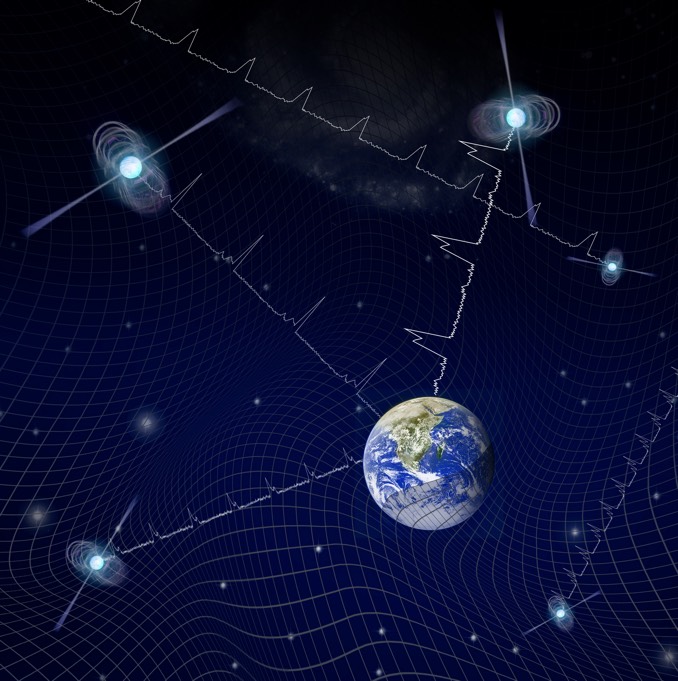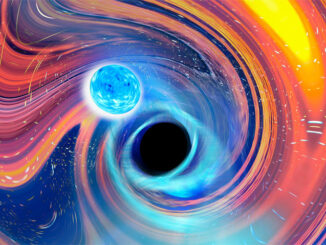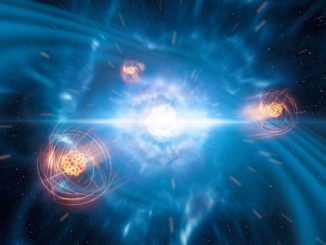
Monitoring the timing of millisecond pulsar flashes over the past 13 years, astronomers have detected subtle changes that may indicate Earth is “bobbing in an ocean of low-frequency gravity waves” generated by supermassive black holes, researchers say.
Speaking in a virtual news conference hosted by the 237th meeting of the American Astronomical Society, Joseph Simon of the University of Colorado at Boulder said the North American Nanohertz Observatory for Gravitational Waves – NANOGrav – monitored 45 pulsars using the Greenbank Radio Telescope and the now-collapsed Arecibo Observatory.
The result is a pulsar timing array in which “we monitor the signals from a large number of these objects,” Simon said. “We actually create a galaxy-size gravitational wave detector within our own Milky Way.
“Here on the Earth, we’re actually kind of bobbing in an ocean of low frequency gravitational waves. And as these waves pass, the Earth gets kind of pushed around very slightly, very slowly, in slightly different directions.”
By comparing slight changes in the timing of flashes from the fast-spinning pulsars, researchers hope to show how the Earth is moving about ever so slightly in a presumed sea of gravity waves.
“As the Earth is pushed closer to a pulsar, the pulses from that object appear to come a little bit sooner than we expect,” Simon said. “And as the stretching and squeezing of spacetime from these gravitational waves continues to happen and the Earth moves away, then those pulses come a little bit later. It’s kind of like a Doppler shift, but not exactly.”
Unlike the LIGO and Virgo collaborations, which are primarily focused on high-frequency gravity waves produced by pairs of black holes and neutron stars, NANOGrav is looking or a persistent low-frequency “background” of gravitational waves created over billions of years by pairs of supermassive black holes.
While the results outlined in a paper published in the Astrophysical Journal Supplements are consistent with low-frequency gravity waves, they are not yet definitive. To confirm direct detection of such background gravity radiation will requite more pulsar observations over even longer periods.
“Trying to detect gravitational waves with a pulsar timing array requires patience,” Scott Ransom, the current chairperson of NANOGrav, said in a statement. “We’re currently analysing over a dozen years of data, but a definitive detection will likely take a couple more. It’s great that these new results are exactly what we would expect to see as we creep closer to a detection.”



